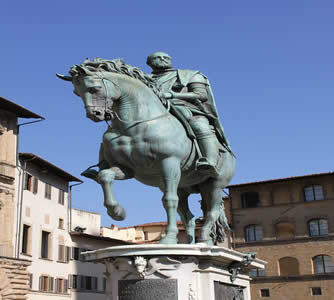During the colonization of Brazil by the Portuguese, a religious order played a prominent role in the colony's social organization: the Company of Jesus, or simply the Jesuits, as they were commonly known.
The Jesuits led by Manoel da Nobrega arrived in colony Brazil in 1549, together with Tomé de Sousa, the first general governor sent by Portugal. The main function of the Jesuits, when they came to Brazil, was to evangelize, catechize and make Christians the indigenous people who inhabited these lands.
In Europe, the goal of the Jesuits was to prevent the increase in the number of Protestants. The Society of Jesus had been founded in 1534 by the military Holy Ignatius of Loyola, in the context of Remodeling and the religious Counter-Reformation. In the colony, they also intended to prevent Protestants from carrying out indigenous catechization.
In order for the catechization to be carried out, it was necessary for the indigenous people to learn the Portuguese language in order to read biblical passages and teach the Catholic religious practice. One of the best known names in the evangelization process that has come down to us was the priest José de Anchieta.
But the Jesuits didn't just teach the indigenous people. The children of settlers, especially the planters, were also educated by them. To offer this education, the Jesuits created some schools around the colony, the best known being the São Paulo College, around which the city of São Paulo de Piratininga, now São Paulo, was founded.
The settlers' education was strict. Discipline was heavily demanded. In case of disobedience to a rule or even a mistake in a lesson, the students were punished by the Jesuits with punishment, often physical. The best known was the use of the paddle, a wooden instrument used to tap the palms of students' hands.
However, as traditional indigenous education was different, based on solidarity and cooperation, with younger Indians learning from older ones, some changes were needed.
In the missions, places where the Jesuits sometimes lived with thousands of indigenous people, it was often necessary to abandon physical punishment. They were located in various locations in the colony, the best known being those built in the south, on the border where Paraguay and Argentina are located.
At missions they also served for the Jesuits to change the habits of the indigenous people. The interest was for them to start living according to European culture: for families to be nuclear (father, mother and children of the couple), for them to settle in a (most of the indigenous tribes were semi-nomadic, living in constant displacement) and began to adopt the rhythms and work disciplines that imposed the Europeans. This process was also known as acculturation.
With this, the Jesuits managed to get the missions to produce for their own consumption, in addition to providing surpluses that were sold. This whole situation led the Jesuits to enter into conflicts with the settlers, who had an interest in indigenous enslavement. The missions served as protected areas from the action of the settlers, but they also resulted in a source of labor for the Jesuits who were enriched by the exploitation of the indigenous people.
In addition to what was traded in the missions, the Jesuits managed to accumulate a fortune by owning huge tracts of land and mills. The Jesuits remained in the Portuguese colony in America until 1759, when they were banned from the Portuguese colonies. The sale of the Jesuits' patrimony guaranteed high incomes for the Portuguese Crown, which showed that the spiritual power of the Jesuits had also been transformed into economic power.
By Me. Tales Pinto

